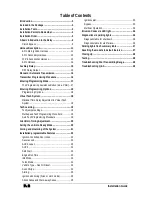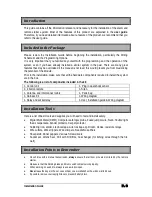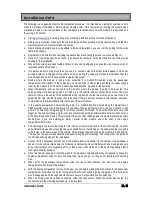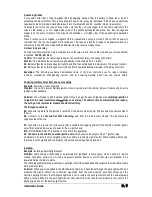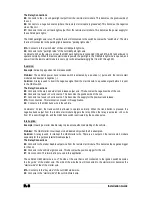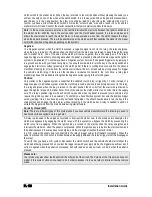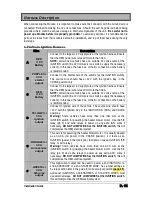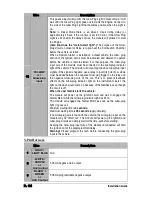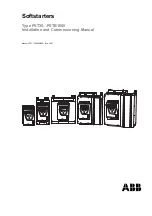
P. 4
Installation Guide
•
The Programming Assistance Button (a.k.a. PAB): The PAB is mounted on the side of the unit. This
push button mimics the hood-pin switch in order to avoid having to get out of the vehicle and pressing the
hood-pin switch. The PAB will work only when the hood is up.
•
Inspect vehicle for any body damage or electrical problems.
•
Always solder and tape all connections.
•
Keep the transceiver away from other types of antennas (GPS/OnStar®).
•
Never install the control unit where it could interfere with normal operation or obstruct service technicians.
•
Always use a grommet when running wires into the engine compartment.
•
Never run wires through bare or sharp metal.
•
Do not disconnect the battery on vehicles equipped with air bags and anti-theft radios.
•
Never ground the control unit to the steering column.
•
Make sure that all electrical switches and controls operate properly.
•
Verify that the vehicle starts and idles properly.
•
Make sure that all safety equipment is installed: the valet button (if installed), the hood switch, and the
warning label.
Example:
Wiring a clutch bypass and a transponder module to the ground out when running wire: At the
junction point, where Ground Out when running “splits” and goes to each device, a diode is inserted on
each of those lines.
Multiple or separate door pin connections:
When joining all door pins together to the door pin input wire of the module, each wire must be isolated
with a diode to prevent feedback.
N.B.: The above examples reflect common situations where diodes are used to isolate. Please note that
there are numerous other scenarios where diode isolation is required.
•
Always make sure that any external relays or modules added to the Remote Starter module are properly
fused and diode isolated.
•
When testing the Shock Sensor, never test on glass with an opened hand, and never hit glass hard
enough to break it. When testing on metal or plastic, make sure the testing does not result in damage to
the vehicle (i.e.: dents, broken glass, damaged trims, etc.).
•
Vehicles equipped with daytime running lights may not allow the installer to view certain programming
results since the daytime running lights do not turn OFF with the IGN off (Note: The Parking Light output
relay in the module gives two “clicks” per flash, 1 “click” for ON and 1 “click” for OFF).
Parking Light flashes referred to in this manual refer to the Parking Light output of the module
INDUSTRY CANADA USER NOTICE:
Operation is subject to the following two conditions: (1) this device may not cause interference, and (2)
this device must accept any interference, including interference that may cause undesired operation of
the device.
To reduce potential radio interference to other users, the antenna type and its gain should be so chosen
that the equivalent isotropically radiated power (EIRP) is not more than that required for successful
communication.
NOTE: The manufacturer is not responsible for any radio or TV interference caused by unauthorized
modifications to this equipment. Such modifications could void the user's authority to operate the
equipment.


